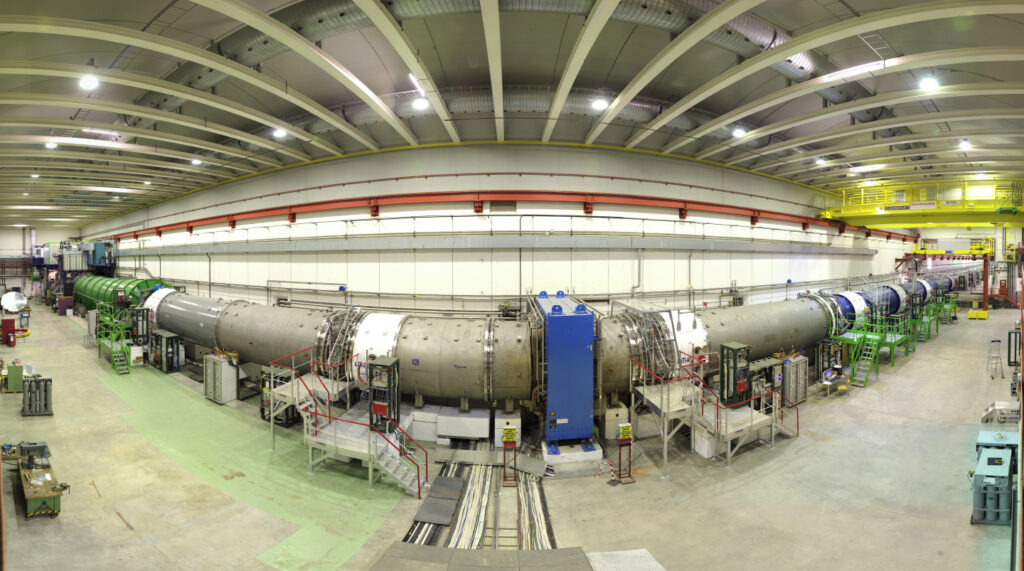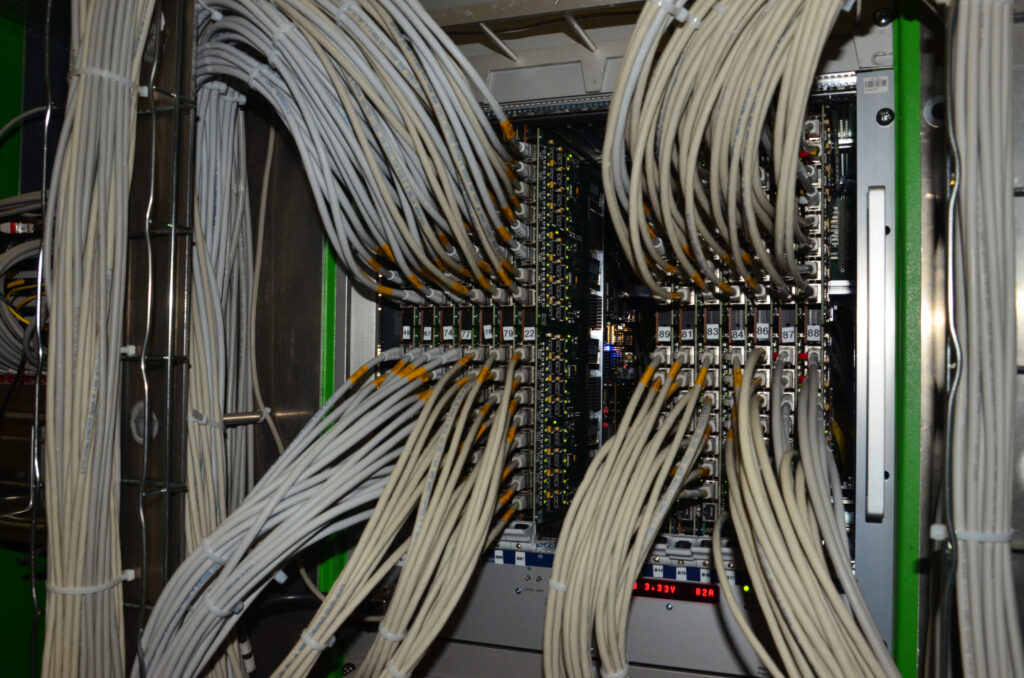Local Manager: Roberto Ammendola; PI: Antonella Antonelli (LNF).
The NA62 experiment is a particle physics experiment at CERN, designed to study the rare decay of the charged kaon into a charged pion and two neutrinos:
![]()
This process is particularly interesting because it occurs with an extremely low probability and can be calculated with high precision within the Standard Model, making it a powerful tool for searching for new physics.

NA62 utilizes a secondary proton beam produced by the SPS (Super Proton Synchrotron) accelerator to generate charged kaons, which decay in a region approximately 250 meters long, where a series of detectors measure and track the produced particles. One of these detectors is the Liquid Krypton calorimeter, which measures the energy of incident photons.
The group from Roma Tor Vergata has developed the calorimetric trigger called LKRL0, a system designed to generate trigger primitives for events in the calorimeter. This system helps to select or discard events of interest, allowing data acquisition from all other detectors. It is based on highly complex electronics, as it must operate at high speed and acquire data in parallel from many channels.

NA62 has been taking data since 2016 and is expected to continue this phase until the end of 2026.
Bibliography:
Here is one of the most recent articles from the collaboration, presenting the results of the latest analyses on data collected during 2021-2022:
The NA62 collaboration., Cortina Gil, E., Jerhot, J. et al. Observation of the K+→pi+ nu nubar decay and measurement of its branching ratio. J. High Energ. Phys.2025, 191 (2025).
https://doi.org/10.1007/JHEP02(2025)191
This article describes in detail the experimental apparatus and data acquisition system:
https://doi.org/10.1088/1748-0221/12/05/P05025
Responsible for the local group: Roberto Ammendola



















































































































